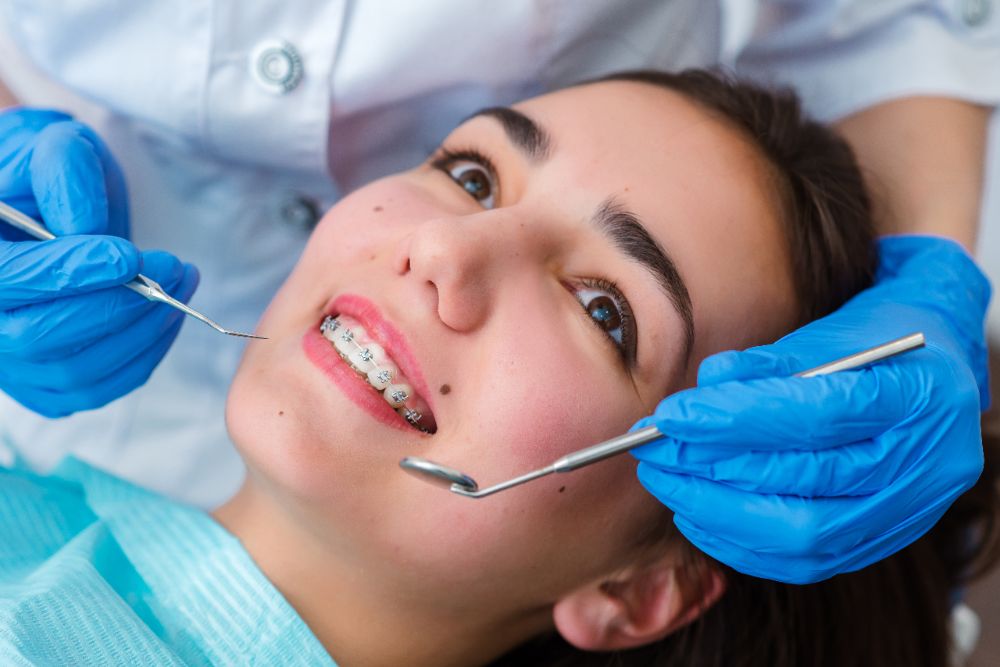How Cumming Orthodontics Addresses Common Braces and Invisalign Problems
How Cumming Orthodontics Addresses Common Braces and Invisalign Problems
Blog Article
Comprehensive Overview to Orthodontics Treatments for Dealing With Dental Misalignments
In the world of orthodontics, the trip to accomplishing a flawlessly lined up smile involves a myriad of treatments customized to correct oral misalignments. From conventional braces to undetectable aligners and also medical alternatives, the area of orthodontics offers a variety of services to address differing levels of oral irregularities. Understanding the intricacies of each procedure, including their devices, benefits, and potential drawbacks, is crucial in making informed choices regarding one's orthodontic therapy. As we browse via the comprehensive overview to orthodontic procedures for fixing dental imbalances, the detailed information of each approach will certainly unravel, clarifying the path towards a harmonious and practical dental placement.
Orthodontic Procedures Review

In addition to clear aligners and conventional dental braces, orthodontists may additionally recommend various other interventions like headgear, palatal expanders, or retainers to resolve specific alignment concerns (orthodontist). These treatments are tailored per individual's special demands and might include a combination of treatments to attain the desired outcomes. Routine adjustments and monitoring are critical components of orthodontic treatment to make certain development is on track and to make any needed modifications along the method. By going through orthodontic procedures, individuals can not just attain a straighter grin yet likewise improve their general dental wellness and function.
Typical Dental Braces: Exactly How They Work
When considering orthodontic therapies for oral misalignments, typical dental braces stand apart as a reliable approach for remedying teeth placing. Conventional dental braces are composed of braces, cables, and bands that collaborate to apply constant pressure on the teeth, gradually moving them into the desired positioning. The braces are connected to the teeth using a special adhesive, and the wires are threaded through the brackets. By readjusting the stress of the wires, orthodontists can control the instructions and force put on each tooth, leading them into correct positioning gradually.
As stress is applied to the teeth through the dental braces, the bone surrounding the teeth is improved to sustain the new tooth positions. Individuals will need regular adjustments at the orthodontist's workplace to make sure the braces proceed to use the right pressure for efficient teeth movement.
Unnoticeable Aligners: Advantages And Disadvantages
Unnoticeable aligners use a convenient and very discreet choice to traditional braces for remedying oral misalignments. These clear, custom-made trays are basically unseen when worn, making them an enticing option for individuals looking for an extra cosmetically pleasing orthodontic treatment. Among dentist my location the main benefits of unnoticeable aligners is their removability, permitting less complicated upkeep of dental hygiene contrasted to traditional braces. Patients can remove the aligners prior to consuming or cleaning their teeth, lowering the risk of food getting embeded the device and streamlining the cleansing procedure.

Surgical Orthodontic Options
Surgical interventions in orthodontics present viable options for attending to complex oral imbalances that might not be properly dealt with via conventional orthodontic treatments. While standard braces and unseen aligners can fix numerous orthodontic issues, certain instances call for medical intervention to achieve optimum outcomes. Surgical orthodontic choices are commonly advised for extreme malocclusions, considerable jaw disparities, and situations where the underlying bone structure requires adjustment to achieve appropriate alignment.
One typical surgical orthodontic treatment is orthognathic surgical procedure, which involves rearranging the jaws to remedy useful concerns such as problem chewing or visite site speaking. This surgical treatment is typically carried out in collaboration with an orthodontist that assists straighten the teeth prior to and after the treatment. Surgical orthodontics may also entail procedures to subject affected teeth, remove excess gum cells, or improve the jawbone to produce a more harmonious face profile.
Before thinking about medical orthodontic alternatives, patients go through a thorough evaluation to identify the need and prospective benefits of such treatments. cumming orthodontist. While surgery might appear daunting, it can significantly boost both the function and appearances of the smile in instances where standard orthodontic therapies drop short
Retainers and Post-Treatment Treatment

Failing to comply with post-treatment care guidelines can result in regression, where the teeth slowly move back in the direction of their original settings. Constant retainer wear, good oral hygiene, and normal oral check-ups are necessary for preserving the results attained through orthodontic surgical procedure and ensuring the lasting stability of the dealt with dental placement.
Final Thought
To conclude, orthodontic procedures supply numerous options for dealing with dental misalignments. Traditional dental braces utilize steel braces and cables to change teeth into correct placement. Unnoticeable aligners give a more discreet choice yet may not be ideal for all instances. Surgical orthodontic choices are readily available for for dentists by dentists much more serious misalignments. Retainers are commonly utilized post-treatment to maintain the brand-new positioning. Generally, orthodontic procedures can efficiently enhance oral health and wellness and aesthetic look.
As we navigate with the thorough overview to orthodontic treatments for fixing dental imbalances, the intricate information of each method will certainly unravel, shedding light on the path towards a useful and unified oral alignment. - cumming invisalign
One of the most common orthodontic treatments is the use of dental braces, which consist of steel brackets and cords that apply mild stress to gradually shift teeth right into the desired placement.When considering orthodontic treatments for dental misalignments, standard dental braces stand out as a tried and true method for dealing with teeth positioning. Additionally, unseen aligners might not be appropriate for complicated orthodontic problems that call for more substantial teeth activity, as they are typically advised for light to modest situations. Retainers are customized orthodontic devices designed to hold teeth in their fixed placements after the conclusion of orthodontic therapy.
Report this page